If you can't do these post stroke your doctor completely failed at their job of getting you 100% recovered!
These Are The Exercises Seniors Should Skip and Safer Alternatives
Whether you’re a master-level athlete who has no plans of ever slowing down or a 65-year-old who’s hitting the gym for the first time in 30 years, the old adage remains true: Age is just a number.
Chronological age, at least. When choosing a workout program, biological age is much more relevant, explains Julie Logue, M.P.H., senior program manager for Silver Sneakers.“The way you have cared for your body over time can better determine appropriate movement and intensity selection,” she says.
Have you stuck to a reasonably healthy diet? Stayed active and maintained muscle mass with resistance training? Worked on mobility and prioritized sleep? Over time, good habits compound while bad habits take a toll, potentially making one person’s experience with aging drastically different from their peers.
As with younger athletes, your training should align with your current fitness level, goals, and any existing injuries or health conditions. There’s no one way for all seniors to stay in shape, and there’s no universal age limit or official cut-off for specific lifts and forms of exercise.
That said, your body will change over time, and your exercise routine should evolve. “Obviously, there are certain physiologic changes that happen to someone who is 70 or 80 versus someone who’s 20,” says Grayson Wickham, D.P.T., physical therapist and founder of Movement Vault, a stretching app and website. He cites a shift in hormone profiles and the inevitable “wear and tear” on a body that’s been active for decades. “But it’s not as much as most people think,” Wickham says, noting that inactivity as you age will only hasten sarcopenia, or age-related muscle loss.
According to the experts (and research), seniors should absolutely continue to prioritize strength training as part of their workout routine. And lifting offers sports-specific benefits to cyclists. Beyond building a strong core and legs for pedaling, resistance training may help seniors minimize falls by improving their balance and spatial awareness. (And if an accident does occur, having some muscle mass on your frame can help you better absorb force and protect your bones and joints.)
However, older cyclists may need to eventually swap some of their routine exercises for more anatomically favorable movements that minimize injury risk and ultimately yield better results.
“The game has changed, and there’s a whole different way of doing this now,” Robert Linkul, C.S.C.S., owner of Training The Older Adult, tells Bicycling. “[In your younger years], your nimble, pliable body could handle the damage you were doing to it by doing the wrong things. Now you’re going to have a very damaging effect if you do that. Your body is not capable of taking that amount of abuse and coming back. So, you have to find the safe and efficient way [to exercise].”
With the help of Linkul, Wickham, and Logue, we compiled the following list of exercises that most seniors should avoid and offered recommendations for what to do instead.
Strength Exercises Seniors Should Skip and What to Do Instead
1. Inversions
“Inversions are movements where the head goes below the heart,” Logue explains. (Think handstands, inverted sit-ups, and pike push-ups.) “They can lead to lightheadedness while increasing pressure in the sinuses. A more moderate approach is keeping your head in line with the heart or higher.”
Instead, try: more traditional core and shoulder exercises
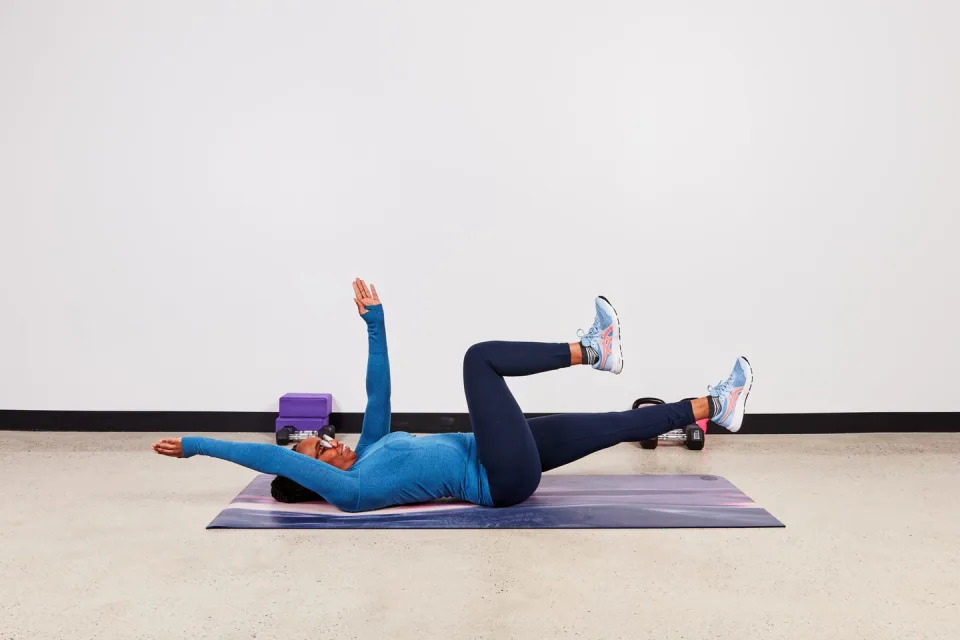
2. Plyometrics
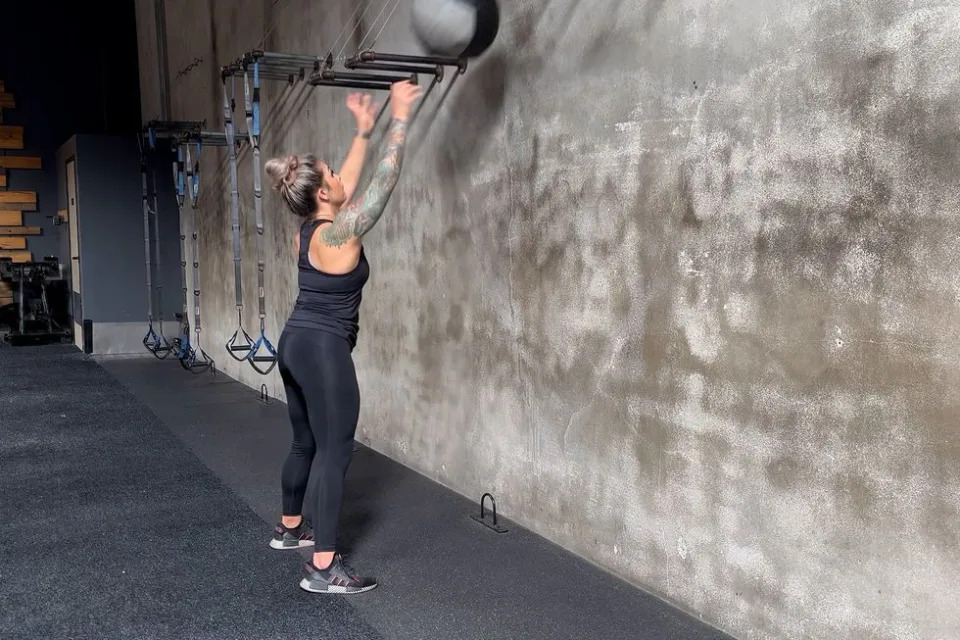
3. Barbell Back Squat
The problem isn’t with the squat. It’s with the bar and the way it rests across the shoulders.
“I don’t see the need to load the spine with that kind of compressive force,” Wickham says. Linkul shares similar concerns: “People are basically going to counter that weight by over-hinging forward into their squat, and that just exposes your back [to injury] even more,” he says. “I would say the only people that should be doing that are powerlifters because that’s their sport.”
Instead, try: hex bar or goblet squat
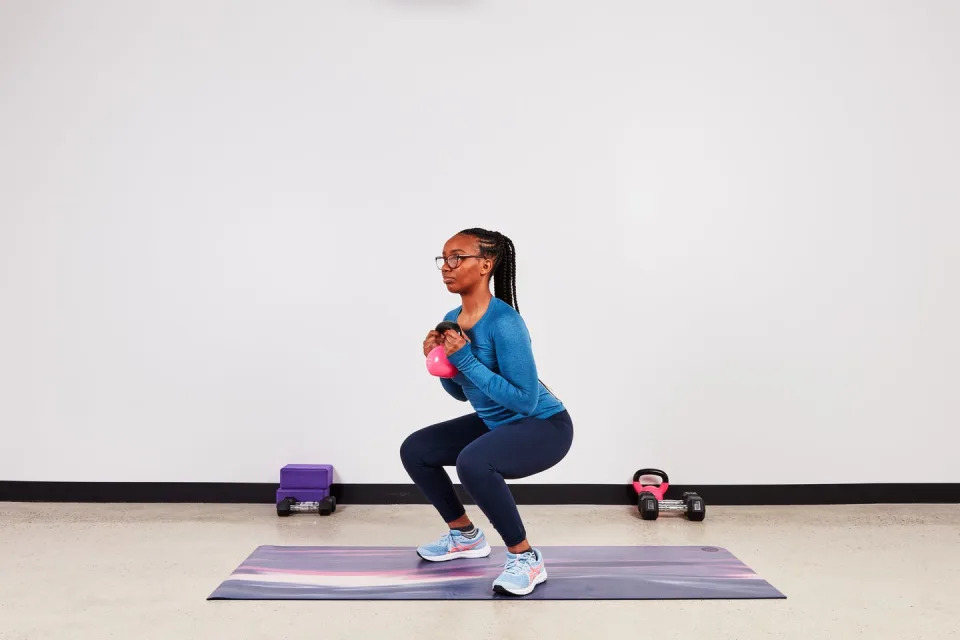
4. Barbell Deadlift
Again, the issues with the barbell deadlift stem from the barbell itself and the position it forces your body into. First of all, a traditional weight plate puts the bar about eight inches off the floor. This means that everyone, regardless of their height or mobility, has to hinge at the same depth. Other types of equipment allow you to customize the height.
To deadlift a barbell, you also have to use a pronated (palms facing you) grip, which internally rotates (and therefore puts more stress on) the shoulder joint. There’s also the forward placement of the bar, which can cause you to hinge too far forward, putting your lower back in a vulnerable position.
Instead, try: hex bar, kettlebell, or dumbbell deadlift
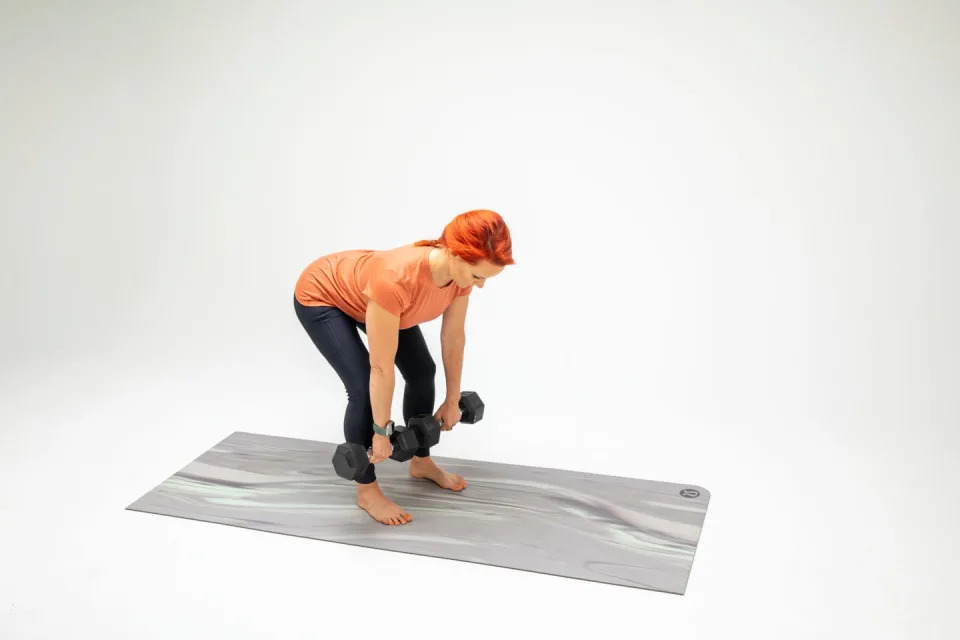
5. Barbell Bench Press
Notice a trend? Even though the barbell is technically a free weight, Wickham explains, a barbell puts both shoulders in a relatively fixed range of motion, which can add stress to the shoulder joint. Plus, if one shoulder has better mobility than the other, it could lead to compensations that ultimately result in injuries.
Instead, try: dumbbell chest press
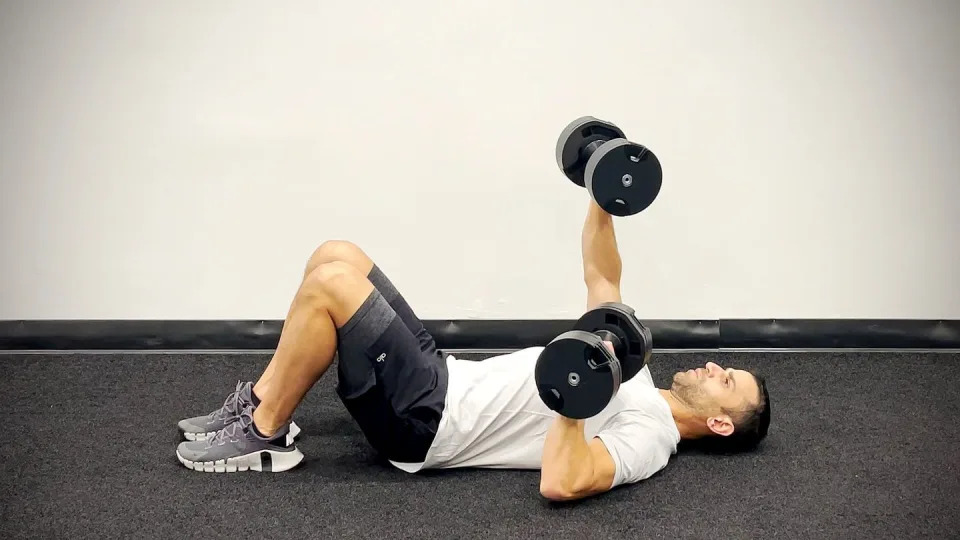
6. Bent Over Row
Logue cautions against any kind of lift that puts your body in unsupported spinal flexion, as that position makes it difficult to maintain a braced core and flat back when hinging forward at the waist. Plus, “bending over with a rounded spine [a common form mistake in this exercise] can cause or exacerbate low back pain,” Logue says.
Instead, try: seated or supported row
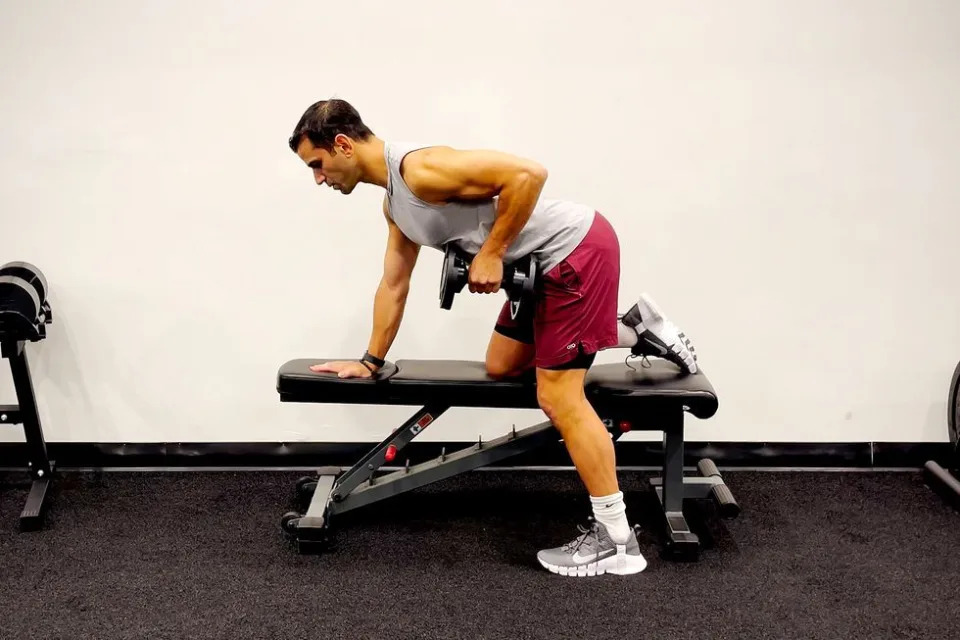 To
do a supported row, stand to left of bench or chair, right hand and leg
on the bench. Hinge at hips and maintain a flat back and core engaged.
Extend left arm down in front of body. This is the starting position.
Pull weight to rib cage, keeping shoulders packed and elbow close to
side. Extend arm to lower weight. Repeat. Then switch sides.Noam Tamir. A seated row using a band or cable enforces good posture
and will fire up the lats. Alternatively, use a bench for a three-point
row (placing one hand on the bench for support), or pull from the floor
in a quadruped (or all-fours) position.
To
do a supported row, stand to left of bench or chair, right hand and leg
on the bench. Hinge at hips and maintain a flat back and core engaged.
Extend left arm down in front of body. This is the starting position.
Pull weight to rib cage, keeping shoulders packed and elbow close to
side. Extend arm to lower weight. Repeat. Then switch sides.Noam Tamir. A seated row using a band or cable enforces good posture
and will fire up the lats. Alternatively, use a bench for a three-point
row (placing one hand on the bench for support), or pull from the floor
in a quadruped (or all-fours) position.7. Weighted Russian Twist
This ab exercise requires you to perform a weighted rotation with flexed hips, one of the most dangerous positions for seniors, Linkul says. “You’re just shearing and ripping lumbar [lower spine] and discs back and forth, and they’re just not designed to do that range of motion,” he says. “They’re designed to do 30 to 60 degrees of range, and not with [a heavy] load.”
Instead, try: Pallof press
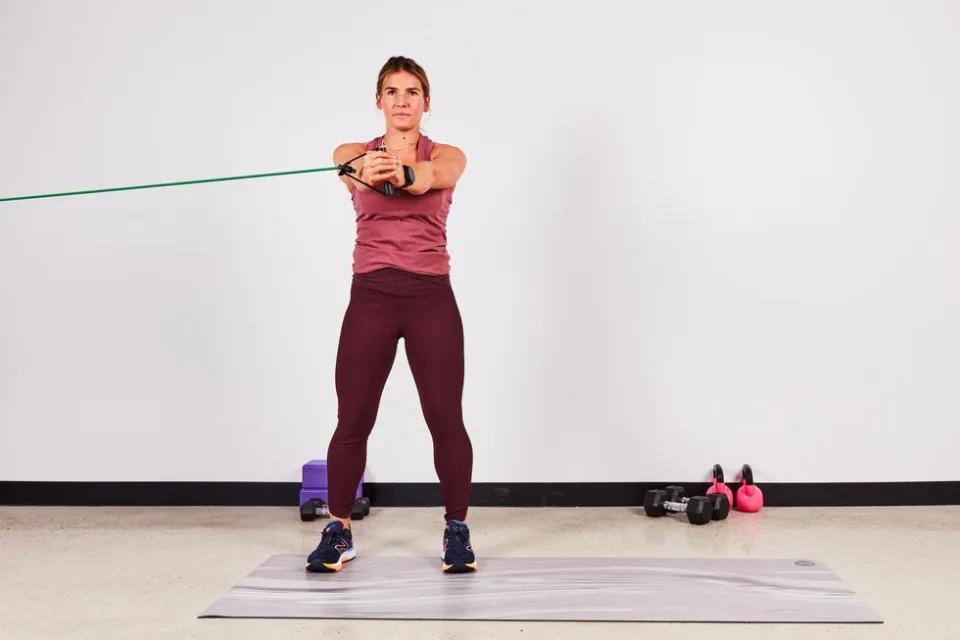
8. Barbell Overhead Press
You probably don’t have to nix this movement pattern altogether. Generally speaking, most seniors can continue to press overhead with some modifications. As with so many other lifts, two weights are better than one barbell, because you can use a neutral, shoulder-friendly grip and work with each shoulder’s unique range of motion.
Instead, try: dumbbell or kettlebell overhead press
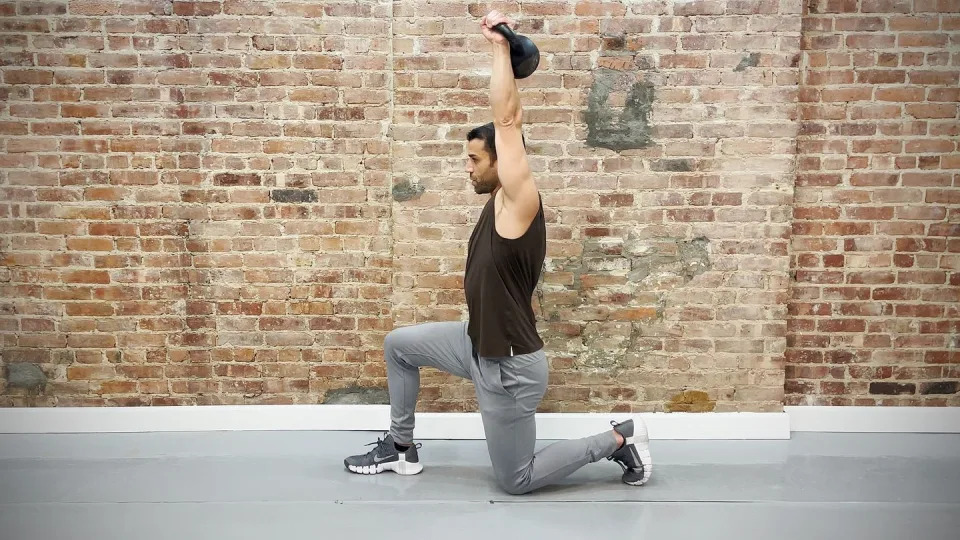
Logue also recommends using a more moderate range of motion to reduce the risk of injury. “With overhead shoulder movements, I’d opt for arms up and slightly forward, like putting something on a shelf, versus arms directly overhead,” she says.
9. Walking Lunges
Because of their balance component, walking lunges put your knees, hips, ankles, and lower back in a vulnerable position, and a lot can go wrong if your form isn’t impeccable.
Linkul explains that movements with forward flexion and a twisting component—for example, if you fall forward or to one side in a lunge, which can happen as balance gets thrown off—can cause lower back injuries, especially if you do this while carrying weight.
Instead, try: split squat
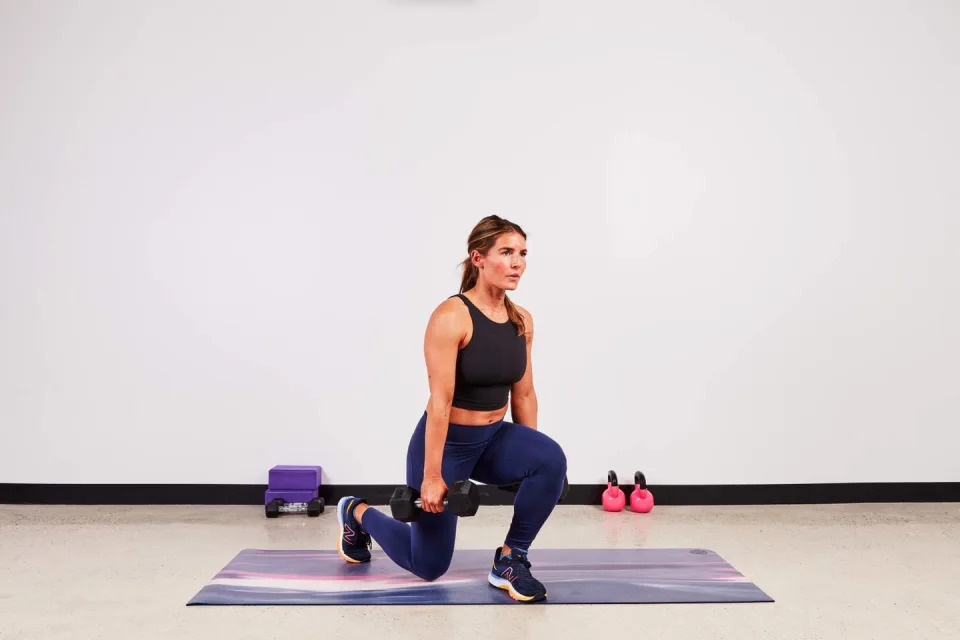
10. Crunches
“When it comes to core work, anything that brings your sternum and pelvis closer to each other should not be performed,” Linkul says. “The reason for that is if you stand up with perfect posture and then you pull your sternum and your belly button closer to each other, that’s putting you in the exact opposite position that you want to be in for good posture positions.”
Crunches, as well as movements like leg lifts, sit-ups, and flutter kicks, fall under this category.
Instead, try: suitcase carry
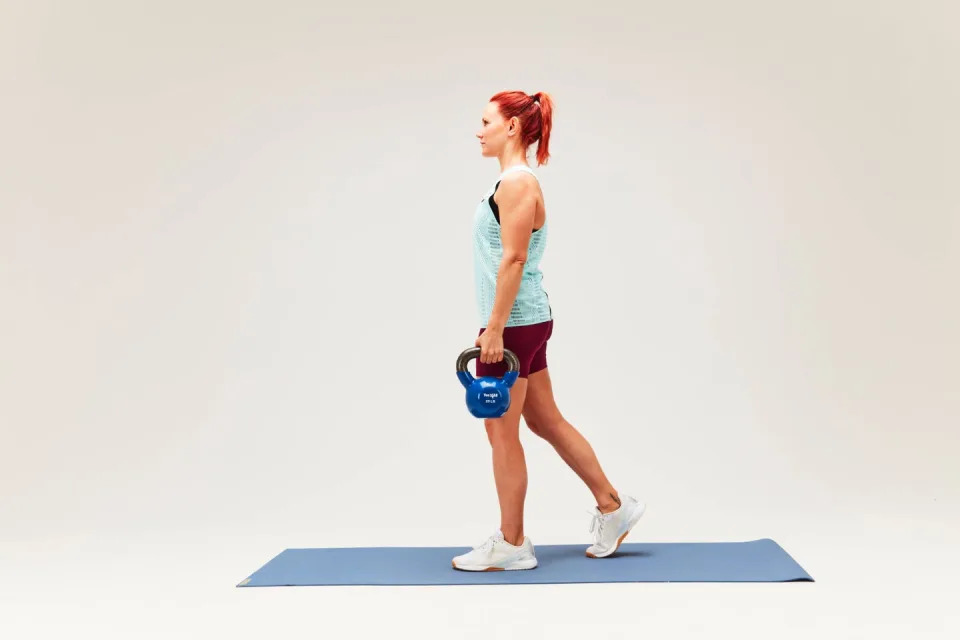
No comments:
Post a Comment